Understanding Bollards Parking Solutions
Overview of Bollards and Their Uses
In the bustling heart of urban life, the importance of bollards parking solutions cannot be overstated. These unassuming yet vital fixtures serve as guardians of order, ensuring that vehicles are parked safely and efficiently without encroaching on pedestrian pathways or private properties. A well-designed bollards parking system not only enhances security but also preserves the aesthetic integrity of a space, turning what could be chaos into calm.
Bollards come in a variety of forms, each tailored to specific uses. Some are removable, offering flexibility for events or maintenance, while others are fixed to create continuous barriers. Their primary role in bollards parking is to delineate boundaries clearly, preventing unauthorised access and protecting vulnerable infrastructure. When thoughtfully integrated, bollards can be both functional and visually appealing, blending seamlessly into the environment while performing their vital role.
Different Types of Bollards for Parking Areas
Understanding bollards parking solutions requires more than a superficial glance; it’s about recognising the nuanced ways these fixtures influence urban flow and security. Different types of bollards are tailored to specific needs, from safeguarding pedestrians to managing vehicular access. Their versatility ensures that each space can be optimised for both function and aesthetics, creating harmony amidst the chaos of city life.
For parking areas, selecting the appropriate bollards is crucial. Fixed bollards provide continuous protection, ideal for delineating boundaries and preventing unauthorised parking. Removable bollards, on the other hand, offer the flexibility needed for events or maintenance, allowing access when necessary. The choice of bollards parking solutions hinges on understanding the environment’s unique demands and balancing security with visual appeal.
There are several common types of bollards for parking areas, each serving a specific purpose:
- Static Bollards: Built to stay in place permanently, offering durable protection against vehicle intrusion.
- Removable Bollards: Easy to deploy or withdraw, perfect for zones requiring occasional access or events.
- Automatic Bollards: Equipped with sensors or remote controls, providing seamless, vehicle-accessible barriers.
By carefully selecting these different types of bollards, urban spaces can be transformed into well-organised, secure environments that respect both safety and aesthetic integrity. The right bollards parking strategy turns potential chaos into organised calm, reflecting a thoughtful approach to urban design and infrastructure management.
Benefits of Using Bollards for Parking Management
Effective bollards parking solutions do more than just demarcate spaces—they serve as silent guardians, ensuring safety and order in increasingly congested urban environments. A well-chosen set of bollards can prevent unauthorised parking, reduce accidents, and streamline traffic flow with minimal fuss. When designed thoughtfully, they become an integral part of the landscape, blending security with aesthetic appeal. This harmony fosters a sense of calm amidst the bustling city streets, turning chaotic parking lots into organised zones of efficiency.
The benefits of using bollards for parking management are profound. They can be customised to suit varying needs, whether that’s protecting pedestrians at busy crosswalks or managing access to private premises. For example, static bollards provide permanent security, while automatic bollards facilitate seamless vehicle access—improving both convenience and safety. Additionally, removable bollards offer the flexibility needed for special events or maintenance, making them an adaptable choice for diverse settings.
- Enhancing security by preventing vehicle intrusion
- Maintaining clear boundaries and organised parking zones
- Allowing controlled access, especially in multi-use spaces
Ultimately, investing in the right bollards parking solutions not only safeguards property and pedestrians but also elevates the entire urban experience. It’s about creating spaces that respect both safety and visual harmony—an essential balance in today’s fast-paced world.
Types of Bollards for Parking Security and Control
Removable Bollards
When it comes to bollards parking, the variety of options available can seem like stepping into a enchanted forest, each pathway offering a unique solution for security and access control. Among these, removable bollards are particularly captivating—they provide flexibility and ease of use, allowing you to swiftly transform a space from a protected zone to an open thoroughfare with a simple twist or lift. This adaptability makes them ideal for areas that require occasional access, such as event spaces or private driveways.
For those seeking a touch of versatility, retractable bollards stand out as a marvel of modern engineering, seamlessly blending aesthetic appeal with robust functionality. They can be lowered into the ground when not in use, ensuring unobstructed parking and pedestrian flow. Conversely, static bollards offer steadfast protection, standing like silent sentinels that delineate boundaries with unwavering resolve. The choice of bollards for parking security often hinges on the specific needs of the location, balancing accessibility with the imperative to deter unauthorised entry.
In the realm of bollards parking, understanding the different types of removable bollards is essential. They include:
- Manual removable bollards, which require physical effort to remove or replace.
- Automatic retractable bollards, operated via remote control or sensor technology for swift deployment.
- Lockable bollards, offering enhanced security by preventing unauthorised removal.
Fixed Bollards
Fixed bollards are the stalwart guardians of parking security—unyielding sentinels that define boundaries with unwavering resolve. Their enduring presence acts as an insurmountable barrier to unauthorised vehicles, offering peace of mind in high-security zones. Crafted from durable materials such as steel or concrete, fixed bollards for parking are designed to withstand the relentless assault of time and tampering, ensuring that access remains regulated and controlled.
While static by nature, their strategic placement can create a formidable perimeter, seamlessly integrating into the aesthetics of any urban landscape. For those seeking a customised approach, some fixed bollards can be embedded with lighting or reflective elements, elevating both safety and visual appeal. The choice of fixed bollards for parking often hinges on the specific security requirements, balancing visibility with resilience.
In essence, fixed bollards serve as the silent arbiters of order—steadfast and resolute—contributing to a comprehensive parking security strategy that harmonises function with form. Their presence not only secures the premises but also subtly underscores the importance of safeguarding property and pedestrian safety in an increasingly complex world of parking management.
Decorative vs. Security Bollards
Within the labyrinth of urban design, the dichotomy between decorative and security bollards for parking manifests as a compelling tension—each serving distinct yet occasionally overlapping purposes. Decorative bollards for parking transform utilitarian spaces into visual statements, their ornate features elevating the aesthetic appeal of plazas, streetscapes, and retail zones. Meanwhile, security bollards for parking are the silent guardians, meticulously engineered to withstand impact and prevent unauthorised access, often embedded with anti-tamper features that ensure longevity and resilience.
When selecting the optimal type of bollards parking, it’s crucial to consider the environment’s specific demands. For instance, in high-traffic commercial settings, security bollards with robust materials such as steel or concrete take precedence, providing an impenetrable barrier. Conversely, in areas where visual harmony is paramount, decorative bollards crafted from wrought iron or customised finishes serve as both protection and design elements.
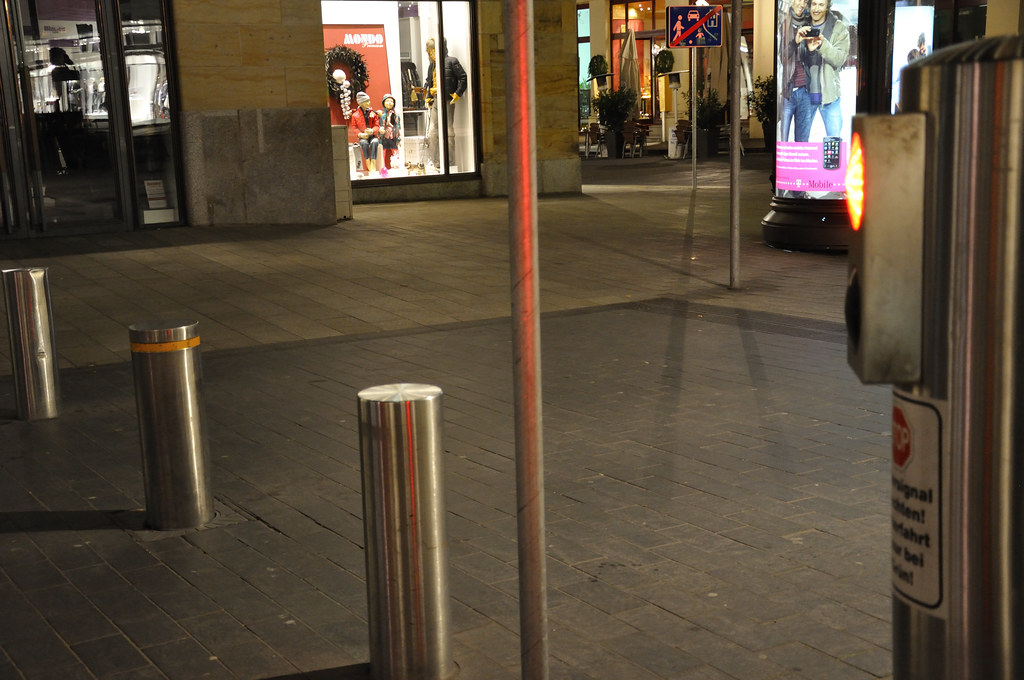
- Impact-resistant security bollards, designed to thwart vehicular intrusion
- Elegant decorative bollards that complement urban aesthetics
- Flexible options like retractable or removable bollards for adaptable parking control
This nuanced distinction underscores the importance of aligning bollards parking choices with both safety priorities and visual objectives, ensuring that each installation seamlessly balances form and function in the intricate dance of urban security and design. After all, the right bollards can define spaces, control access, and subtly reinforce the narrative of safety woven into the fabric of city life—an indispensable element in the complex realm of parking management.
Automatic Bollards and Access Control Systems
In the realm of urban sanctuaries, automatic bollards and sophisticated access control systems stand as the sentinels of seamless parking management. These technological marvels transform traditional bollards parking into a ballet of precision and security, allowing authorised vehicles to glide in and out with effortless grace while denying unwelcome intrusions. Their silent operation is orchestrated by sensors, cameras, and control interfaces that harmonise safety with convenience—an invisible shield for busy city streets.
Automatic bollards are often embedded with intelligent features such as remote activation, hydraulic mechanisms, or RFID recognition, ensuring swift response times and robust resistance against vehicular assault. When combined with access control systems—be it key cards, biometric scanners, or smartphone apps—they craft an intricate dance of access that balances freedom with fortification. This symphony of security measures elevates the parking landscape from mere space allocation to an elegant fortress of urban resilience.
For those seeking flexibility, retractable bollards offer a dynamic solution, transforming from a protective barrier into an open passage in a matter of seconds. Such adaptable bollards parking systems are invaluable in environments where access needs fluctuate with the rhythm of daily life, seamlessly blending form and function in the ever-evolving cityscape.
Design Considerations for Parking Bollards
Material Choices: Steel, Concrete, Plastic
When selecting materials for parking bollards, the choice isn’t just about aesthetics; it’s about balancing durability, safety, and environmental impact. Steel stands out as a robust option—offering exceptional strength and resistance to impacts, making it ideal for high-security parking areas. Its sleek, modern appearance can seamlessly blend into contemporary urban designs, creating a professional yet inviting atmosphere.
On the other hand, concrete bollards parking solutions excel in longevity and stability. Often utilised in areas requiring permanent fixtures, concrete provides a formidable barrier against vehicular intrusion while requiring minimal maintenance. Its weighty presence naturally deters unwanted parking, adding an extra layer of security to busy parking lots or restrictive zones.
Plastic bollards are the versatile champions of parking management. Lightweight and cost-effective, they are perfect for temporary or semi-permanent applications. Their flexibility allows for easy installation and removal, which is vital for dynamic parking environments. Consider the following when choosing your material:
- Impact resistance
- Environmental resilience
- Visual appeal
- Cost and maintenance
Ultimately, the decision hinges on specific parking needs, whether it’s safeguarding a high-traffic lot or creating a visually appealing boundary. Understanding these material choices ensures that bollards parking solutions are both functional and fitting within the overall landscape design.
Height and Diameter Specifications
Design considerations for bollards parking go far beyond mere aesthetics; they are critical in defining the safety, functionality, and visual harmony of your space. Among the most vital specifications are height and diameter, which directly influence the bollard’s ability to control access and withstand impacts. Properly calibrated dimensions ensure these sturdy guardians serve their purpose without overpowering the environment or compromising accessibility.
Typically, the height of bollards parking ranges from 600mm to 1100mm, depending on whether the goal is to prevent vehicle intrusion or delineate pedestrian zones. The diameter, often between 100mm and 200mm, balances visual subtlety with sufficient impact resistance. For high-security areas, taller and thicker bollards create an imposing barrier, while shorter, slimmer options work well for decorative or boundary marking roles.
When selecting the right specifications, consider factors such as the level of vehicular impact expected, environmental conditions, and aesthetic harmony. In some cases, an ordered list can help clarify choices:
- Impact resistance: taller, thicker bollards are more robust.
- Environmental resilience: materials and dimensions should withstand weather effects.
- Visual appeal: proportionate sizes blend seamlessly into the landscape.
By thoughtfully tailoring height and diameter, you ensure your bollards parking solutions are both a formidable defence and an elegant complement to the overall design. After all, these unassuming sentinels are the unsung heroes of parking management, quietly shaping the safety and flow of your space.
Visibility and Reflectivity
Visibility and reflectivity aren’t just optional extras when it comes to bollards parking; they are the unsung heroes ensuring safety doesn’t rely solely on blind luck. In the dim gloom of early mornings or under the relentless glare of midday sun, well-designed bollards should command attention without turning into an eyesore. Reflective surfaces or high-visibility paint can make all the difference, transforming ordinary bollards into effective sentinels that demand respect from both drivers and pedestrians alike.
In fact, the inclusion of reflective features is often the deciding factor in preventing costly accidents. For areas with poor lighting, consider bollards equipped with reflective tape or embedded reflective strips—these little enhancements cast a glow that screams “stay alert!” even when the surroundings suggest otherwise. A simple yet powerful way to boost the safety quotient of your bollards parking is to opt for options with high reflectivity, ensuring they are as visible as a neon sign in a blackout.
To further amplify safety, some installations incorporate colour-coded bollards or specialised coatings that catch the eye, making them stand out amid the urban landscape. Remember, the goal is clarity: clear visual cues that reinforce boundaries without overwhelming the aesthetics of your environment. When visibility and impact resistance are paired harmoniously, bollards parking doesn’t just mark the space—it commands respect and ensures safety with subtle authority.
Durability and Weather Resistance
Durability and weather resistance are often overlooked but are essential considerations in the design of bollards parking solutions. In environments subject to the whims of nature—be it heavy rain, snow, or intense sunlight—bollards must stand firm and maintain their visual integrity. Choosing materials with high resilience, such as galvanised steel or reinforced concrete, can significantly extend the lifespan of bollards, reducing long-term maintenance costs. The challenge lies in balancing strength with aesthetic appeal, ensuring that the bollards do not become eyesores after years of exposure.
To optimise performance, consider implementing coatings and finishes specifically engineered for weather resistance. These protective layers guard against corrosion and fading, preserving both function and form. For instance, powder coating not only enhances visual appeal but also provides a robust barrier against the elements. In areas prone to vandalism or accidental impact, impact-resistant designs are vital—think thicker walls or embedded reinforcement—so bollards parking can withstand the rigours of daily life while maintaining their purpose.
Incorporating weather-resilient features ensures that bollards continue to serve their critical role in parking management without succumbing to the environment. When selecting bollards, it’s wise to evaluate the local climate and choose options that combine practicality with longevity—because investing in durable bollards parking isn’t just about safety; it’s about safeguarding the urban landscape itself.
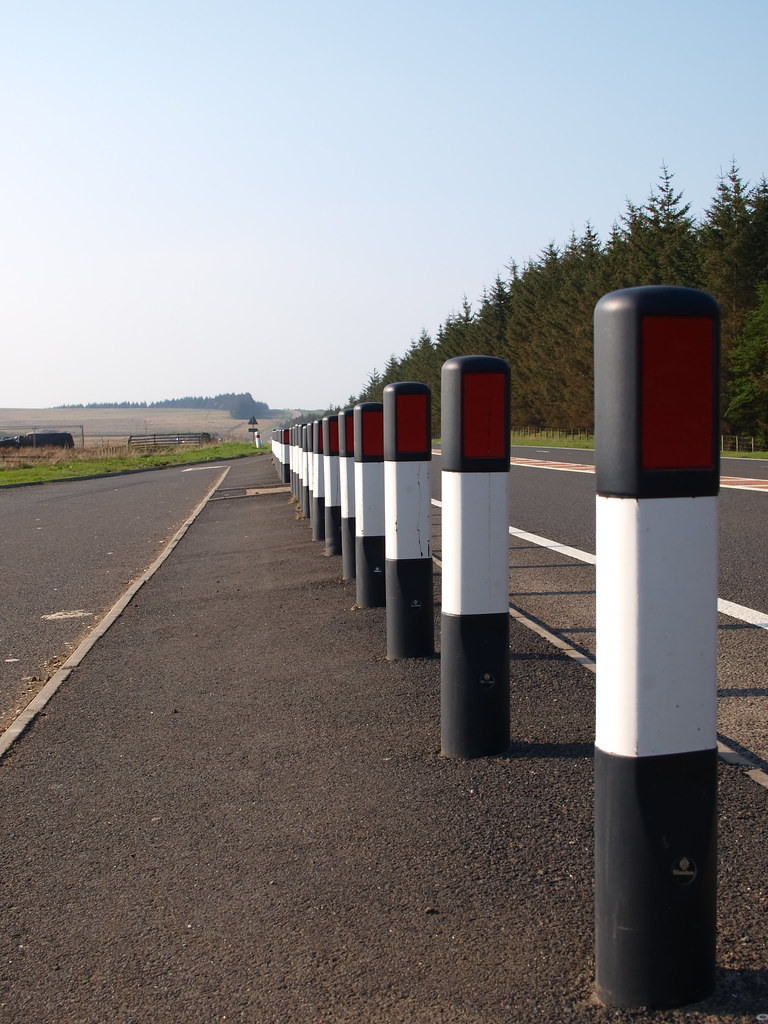
Installation and Maintenance of Parking Bollards
Installation Best Practices
Installing bollards for parking isn’t just about positioning sturdy posts in the ground; it’s an exercise in precision and foresight. Proper installation ensures that bollards parking systems serve their purpose effectively, whether for guiding traffic, safeguarding pedestrians, or delineating restricted zones. A professional approach begins with selecting the right foundation, often involving concrete footings that anchor fixed or removable bollards securely. Ensuring the correct height and diameter is crucial—too short, and they might be overlooked; too tall, and they could obstruct visibility.
Best practices in installation also call for meticulous site assessment. Marking out the exact locations beforehand minimizes errors and facilitates optimal spacing, which is vital for both security and aesthetic harmony. Regular maintenance of bollards enhances their longevity, keeping them resilient against weather conditions and potential impact. This includes routine checks for corrosion or damage and ensuring reflective elements remain visible during night hours. For those managing large parking areas, an ordered approach—perhaps employing a numbered grid system—can streamline ongoing upkeep and reinforce effective parking management strategies.
Maintenance Tips for Longevity
Effective bollards parking hinges on meticulous maintenance and strategic upkeep, transforming functional fixtures into enduring sentinels of order. Regular inspections are essential; keeping an eye out for corrosion, dents, or fading paint can prevent minor blemishes from morphing into costly repairs. A well-maintained bollard not only preserves its aesthetic appeal but also retains its vital security role in managing parking zones.
To bolster longevity, consider implementing a routine cleaning regime—removing dirt and grime that can accelerate material degradation. For metal bollards, applying anti-corrosion coatings or reflective tapes ensures visibility and resilience against the elements. An ordered approach, such as maintaining a numbered grid system within large parking facilities, simplifies ongoing upkeep and guarantees that each bollard remains in prime condition.
In terms of installation, choosing the right foundation—often concrete footings—is crucial for stability, especially in high-traffic areas. Proper anchoring prevents displacement and enhances security. When it comes to height and diameter specifications, a balance must be struck; too tall and they obstruct sightlines, too short and they fail to serve their protective purpose. With thoughtful attention to these details, bollards parking can be both a functional and durable solution, seamlessly blending safety with sophistication.
Cost Considerations
When considering the installation and ongoing maintenance of bollards parking, a well-informed approach can save more than just a few pennies—it can preserve the integrity of your entire parking infrastructure. The initial cost of bollards varies widely depending on material choices and complexity, but neglecting proper installation can turn a seemingly modest investment into a costly endeavour. Choosing the right foundation—most often concrete footings—ensures stability, especially in bustling, high-traffic zones. Improper anchoring not only risks displacement but also compromises security, turning what should be a safeguard into a liability.
Cost considerations extend beyond installation. Maintenance expenses, though sometimes underestimated, are vital for longevity. Regular inspections, timely repainting, and corrosion prevention treatments can extend the lifespan of bollards parking significantly. For larger facilities, implementing a systematic approach—perhaps a numbered grid system—can streamline upkeep and reduce labour costs. This strategic organisation ensures each bollard remains functional and visually appealing, reinforcing your commitment to safety and order without draining the budget.
Regulations and Safety Standards for Bollards in Parking Areas
Legal Requirements
In the realm of bollards parking, adherence to rigorous regulations and safety standards is not merely a guideline but a vital shield that safeguards pedestrians and vehicles alike. Authorities across the UK stipulate specific legal requirements to ensure that bollards installed in parking areas serve their purpose without introducing hazards. Compliance with these standards fosters a secure environment, where each bollard acts as a steadfast guardian rather than an unintended obstacle.
Regulations often mandate that bollards in parking zones possess reflective qualities to maintain visibility during night hours, reducing the risk of accidents. Additionally, safety standards specify minimum height and diameter specifications to prevent accidental collisions and ensure robust protection. For example, the placement of bollards should follow a precise distance from walkways and entrances, forming an unbreakable perimeter of safety.
To enhance safety and legal conformity, many experts recommend creating a checklist that includes:
- Ensuring reflective surfaces are intact and visible at all times
- Verifying installation meets height and durability standards
- Maintaining appropriate spacing to avoid obstruction or tripping hazards
It’s crucial that bollards used in parking areas not only meet these standards but are also regularly inspected and maintained, ensuring they continue to serve as effective barriers in the ever-evolving landscape of urban mobility and safety compliance.
Safety Guidelines
In the intricate dance of urban mobility, the precision of regulations and safety standards governing bollards parking cannot be overstated. Each bollard installed in parking areas acts as a silent sentinel, demanding strict adherence to national standards to ensure pedestrian safety and vehicular protection. The legal framework in the UK stipulates that bollards in parking zones must be designed with reflective surfaces, a crucial feature that dramatically enhances visibility during low-light conditions, thereby reducing the likelihood of accidents.
Beyond reflectivity, specific height and diameter specifications are mandated to prevent inadvertent collisions and to reinforce the bollard’s protective function. Proper placement—such as maintaining precise distances from walkways and entry points—creates an unassailable safety perimeter, transforming bollards parking from mere barriers into integral components of urban safety infrastructure. To uphold these standards, it’s wise to implement a comprehensive safety checklist that includes:
- Regular inspection of reflective surfaces for clarity and effectiveness
- Verification that bollards meet mandatory height and durability standards
- Consistent maintenance of spacing to prevent obstructions or tripping hazards
Adherence to these safety guidelines not only ensures legal compliance but also cultivates an environment of trust, where bollards serve as steadfast guardians amid the complex choreography of city life. Regular inspections and vigilant upkeep are essential to maintain their integrity, especially given the unpredictable nature of weather and urban wear and tear that can compromise their functionality over time.
Accessibility Compliance
In the realm of urban planning, compliance with regulations and safety standards for bollards in parking areas isn’t merely a bureaucratic box to tick—it’s the foundation of pedestrian safety and efficient traffic management. The UK’s legal framework mandates that bollards parking must adhere to strict criteria, ensuring these structures serve their purpose without becoming hazards themselves. Reflective surfaces, for instance, are an essential requirement, dramatically improving visibility during night and poor weather conditions, reducing the risk of accidents.
Furthermore, the specifications around height and diameter are carefully calibrated to prevent inadvertent collisions and reinforce the bollard’s protective role. To guarantee these standards are met consistently, many organisations adopt a rigorous safety protocol. This often includes a formal checklist, which covers:
- Ensuring reflective surfaces are clean and effective
- Verifying bollards meet durability standards
- Maintaining proper spacing to avoid tripping hazards
Such measures are vital not only for legal compliance but also to foster an environment where bollards parking acts as a silent yet steadfast guardian in bustling urban landscapes. Adherence to these standards underscores a commitment to safety, visibility, and accessibility—cornerstones of well-managed parking zones.
Innovative Uses of Bollards in Parking Management
Urban and Commercial Parking Solutions
In the evolving landscape of urban and commercial parking solutions, bollards parking has transcended its traditional role of mere barriers to become a canvas for innovation. Cities worldwide are harnessing the versatility of bollards to craft smarter, safer parking environments that respond dynamically to changing needs. Imagine a system where bollards automatically rise to block unauthorised access during off-hours, seamlessly integrating automatic bollards and access control systems to enhance security without compromising convenience.
Furthermore, innovative uses of bollards extend beyond security. They serve as architectural elements that define space, guide traffic, and even promote eco-friendly initiatives. For example, embedded in urban planning, decorative bollards offer aesthetic appeal while subtly delineating pedestrian zones from vehicle pathways. In commercial parking areas, retractable bollards can be employed to create flexible zones that adapt to peak times or special events. This adaptability ensures efficient use of space and maximises revenue potential, illustrating just how vital bollards parking is for modern urban management.
Event Space and Restricted Area Management
In the shadowed corridors of modern urban design, bollards parking has emerged as a silent guardian—an enigma wrapped in steel and ingenuity. Beyond simple barriers, innovative bollards find their place in managing event spaces where flexibility is paramount. Retractable bollards, for instance, can transform a bustling courtyard into an elegant gathering zone overnight, accommodating crowds and vehicles with equal grace.
Restricted area management has also embraced the dark allure of bollards parking. Automated systems can deploy retractable bollards at the flick of a switch, sealing off sensitive zones from prying eyes or unwelcome intruders. This dynamic approach ensures security without sacrificing the flow of daily life. In these scenarios, bollards become more than mere physical obstacles—they evolve into orchestrators of space, dictating access with a silent, steadfast authority.
Integration with Smart Parking Technologies
Integrating bollards parking with smart parking technologies revolutionises urban space management. Automated systems can synchronise with sensor-enabled bollards to optimise vehicle flow and maximise space efficiency. For example, sensor-activated retractable bollards can be programmed to allow access only during designated hours, reducing unauthorised parking and enhancing security.
Smart technology enables real-time monitoring of parking occupancy, and bollards parking plays a key role in this ecosystem. By deploying intelligent bollards that communicate with central management platforms, operators can swiftly adapt to changing demands. This integration allows for seamless control of access points, minimising congestion and improving overall user experience.
Some advanced systems incorporate numbered or colour-coded bollards parking zones, guiding drivers intuitively and reducing confusion. These innovations prove particularly useful in high-traffic urban centres where space is at a premium. As cities continue to evolve, the synergy of bollards parking with smart tech promises a future of smarter, safer, and more efficient parking management.
Choosing the Right Bollards for Your Parking Needs
Assessing Security Requirements
When selecting bollards parking solutions, understanding the security requirements is paramount. Not all parking areas face the same threats; some need robust protection against collision impacts, while others require subtle visual cues to guide drivers safely. The key is to assess the environment carefully—considering factors like foot traffic, vehicle volume, and potential vandalism.
For high-security zones, heavy-duty bollards—such as fixed steel or reinforced concrete—are often essential. Conversely, in areas prioritising aesthetics and flexibility, removable or decorative bollards might suffice. To ensure optimal protection, it’s also vital to evaluate visibility and reflectivity, which enhance safety during low light conditions.
A well-designed bollards parking system balances security with accessibility, seamlessly integrating with existing infrastructure. Whether safeguarding a corporate plaza or managing a busy urban car park, matching the right bollards to your specific security needs is the foundation of effective parking management.
Budget-Friendly Options
In the realm of urban design, where space is both a commodity and a canvas, selecting budget-friendly bollards for parking emerges as an art of balance and ingenuity. The perfect bollards parking solution need not drain resources; instead, it can be a testament to smart investment, blending durability with affordability. When prioritising cost-effective options, materials such as plastic or lightweight steel can provide resilient barriers that withstand the rigours of daily use without the hefty price tag.
Yet, affordability does not mean compromising on safety or aesthetic appeal. For those seeking a harmonious blend of function and form, decorative bollards offer a charming yet practical alternative, elevating the visual allure of parking areas while maintaining a clear boundary. Consider the strategic use of bollards parking that are colour-coded or reflectively coated—these subtle enhancements ensure visibility in low-light conditions, safeguarding both vehicles and pedestrians alike.
- Assess your environment’s security needs carefully—are you safeguarding high-value assets or simply organising traffic flow?
- Match your budget with the durability required—less costly options like plastic bollards may suffice in low-risk zones, whereas reinforced concrete could be reserved for more sensitive areas.
- Balance aesthetic aspirations with practical demands, ensuring that your chosen bollards parking system is both economical and effective.
In the end, the most impactful solutions are those that marry cost-efficiency with intelligent design—transforming each parking space into a strategic asset. When you choose the right bollards for your needs, you craft not just boundaries but a narrative of safety, style, and smart management that endures the test of time.
Aesthetic and Branding Considerations
When it comes to bollards parking, aesthetic appeal and branding are often overlooked but can significantly influence the perception of a space. Carefully chosen bollards can serve as a subtle canvas for your brand identity, whether through colour, shape, or finish. Integrating look and function ensures that your parking area not only guides traffic but also leaves a memorable visual impression.
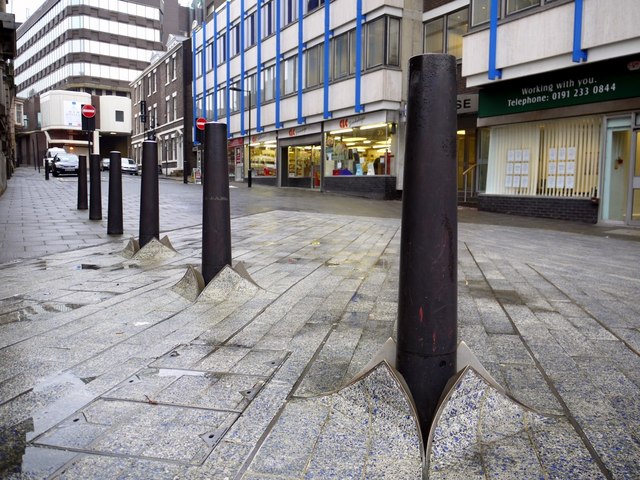
Strategic visual cues are vital—consider using colour-coded bollards parking to delineate zones or reflectively coated options to enhance safety during low-light conditions. These elements do more than just serve a practical purpose; they weave a narrative of professionalism and attention to detail. Moreover, selecting the right style of bollards—be it sleek and modern or classic and decorative—can elevate the overall ambiance of the space, aligning with your organisation’s branding ethos.
Ultimately, choosing the right bollards for parking involves balancing visual harmony with practicality. The integration of colour, finish, and material not only reinforces safety but also crafts an environment that speaks to quality and foresight. In this way, bollards parking becomes more than a boundary—it becomes an extension of your brand’s character and a testament to deliberate design.
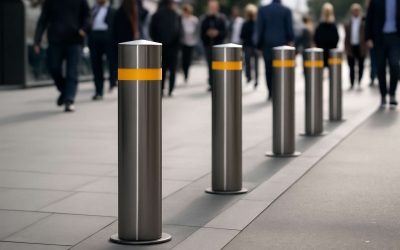

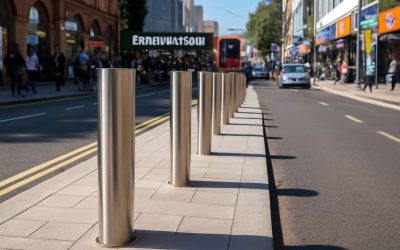
0 Comments